From Azzurra to Zzzs: An A to Z of the Giro d’Italia
This article originally appeared on Velo News
Grand tour season opens this week with the Giro d'Italia setting off from Fossacesia on Saturday.
Three-week races are unlike any other in cycling with the 21 stages, brutal mountains, and seemingly endless kilometers pushing the riders to their limits.
Every year, there are storylines and details plenty to follow at the 2023 Giro d'Italia.
Also read:
Robbie McEwen on Mark Cavendish: 'I won't be shocked if he wins a Giro d'Italia stage'
COVID-19 strikes support crew of Primoz Roglic days ahead of Giro d'Italia
Ranking the favorites, outsiders, and wildcards hunting GC at the Giro d'Italia
You've seen the favorites and the stages for this year's “corsa rosa”, but what about everything else? Don't worry, we've got you covered all the way from A to Z.
A -- Azzurra
Since 2012, the leader of the mountains classification has worn the “maglia azzurra”, or the blue jersey. The mountains classification has been a part of the Giro d'Italia since 1933, making it the oldest of the secondary classification titles. For the first 41 years, there was no jersey for the leader of the category. A “maglia verde”, or green jersey, was introduced in 1974 and it stayed that color until 2011.
B - Basilicata
Situated in the south of Italy, Basilicata is one of the regions visited during the opening week of the 2023 Giro d'Italia, on stage 4. The region has a rich food culture that is based simple, humble ingredients. Notable dishes include Lagane and chickpeas, cod fish and crusco peppers, and salsiccia lucana.
C -- Cima Coppi
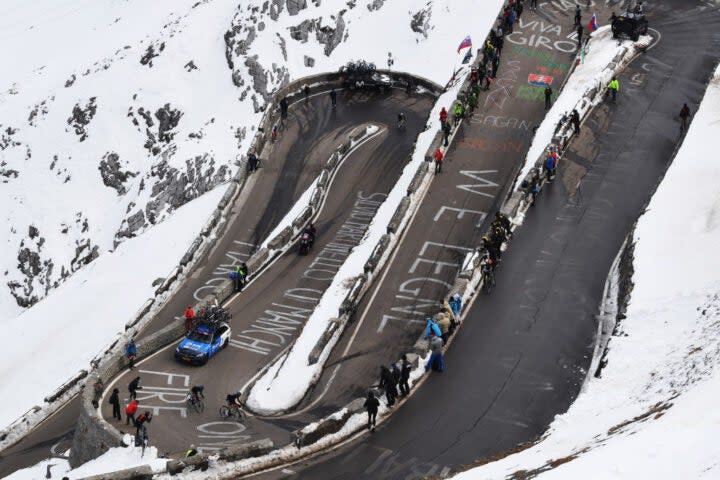
The Cima Coppi is the highest point of Giro d'Italia. Named for the five-time winner of the race, Fausto Coppi, it was first introduced in 1965 and it awards double the number of usual points for the mountains classification. This year, the Great St Bernard Pass -- which crests at 2,469m -- has the honor of being the highest point in the race. The highest Cima Coppi is the Stelvio Pass, which rises to 2,758m, and it has been used nine times at the Giro d'Italia.
D -- Dolomites
Mountains are a key part of grand tours, and the Dolomites have been a major feature of the Giro d'Italia down the years. The mountain range will play host to the final two mountain stages this year, which will likely decide the overall winner of the race. Stage 19 will cross the Campolongo, Valparola, and Giau passes before tackling the Passo Tre Croci and the summit finish on Tre Cime Di Lavaredo. Tre Croci and Tre Cime Di Lavaredo will be used again the following day for the mountain time trial.
E -- External starts
As cycling expands its horizons across the world, starts outside of Italy are becoming a far more common occurrence in grand tours. Last year saw the 14th foreign start when the 2022 edition set off from Hungary. The first ever international start was in 1965 when the race began in San Marino. Since then, the race has branched further out with the “grande partenza” in Israel the furthest from Italy and currently the only start outside of Europe.
F -- Fossacesia
The Abruzzan city of Fossacesia will play host to the grande partenza of the 2023 Giro d'Italia. Nestled on the Adriatic coast, Fossacesia is known for its vineyards and olive groves. While it once relied on its grapes and olives for its economy, it is now a popular seaside town.
G -- Gazzetta dello Sport
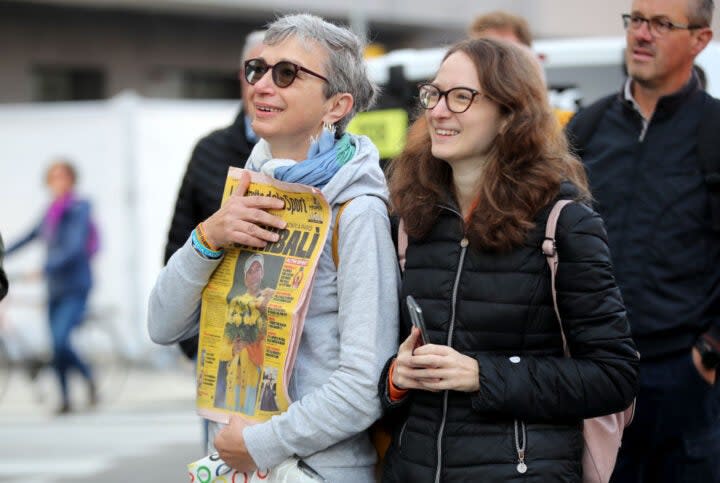
Inspired by the success of the Tour de France, the iconic Italian sports daily created the Giro d'Italia in 1909. The newspaper had already created the Giro di Lombardia and Milan-San Remo in 1905 and 1907, respectively, and wanted to add another event to its portfolio.
H -- Hampsten (Andy)
Andrew Hampsten remains the only U.S. rider to win the Giro d'Italia after he took home the victory in 1988, beating Erik Breukink by 1:43. Hampsten took over the pink jersey on stage 14, which was raced in a snowstorm. The pictures from that day have become iconic, as the riders braved torrid conditions to get to the finish. The following stage was shortened due to the ongoing weather issues. Initially starting with just a 15-second advantage over Breukink, Hampsten gradually grew his advantage to win by a comfortable margin.
I -- Intergiro
While the blue jersey now signals the leader of the mountains classification, it used to belong to another -- now defunct -- category called the Intergiro between 1989 and 2005. The category was calculated in a similar way to the overall title but the line where the classification time was taken came mid-way through the stage. Riders could earn some bonus seconds for being among the first to pass that line and it often benefitted those that were regularly in breakaways. Among the winners of the category were Miguel Indurain, Tony Rominger, and Magnus Backstedt. Prior to 1989 -- and for one more year in 2006 -- the blue jersey was for a combination classification.
J -- Joe Dombrowski
Joe Dombrowski is set to ride his eighth Giro d'Italia this spring, making him the U.S. rider with the most starts at the Italian grand tour. Both Greg LeMond and former winner Andy Hampsten both lined up for seven starts each, but Dombrowski will move clear of them this weekend. Astana-Qazaqstan goes to the Giro d'Italia with a rag-tag group of riders and it's unclear what Dombrowski's role will be. He could go for stages or a GC tilt.
K -- Kuss (Sepp)
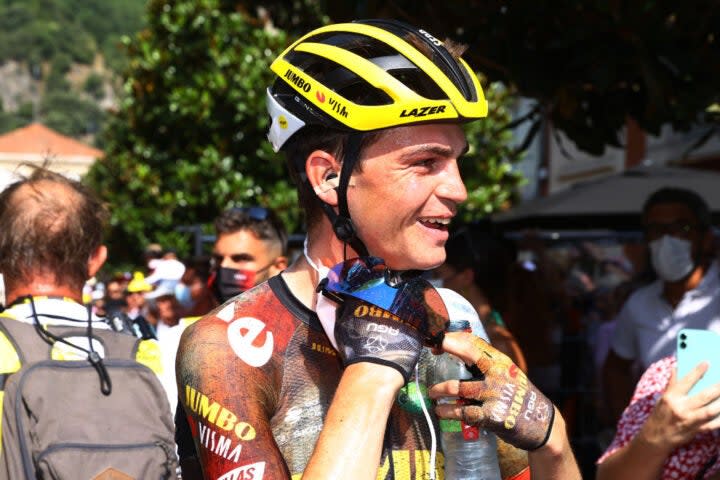
Sepp Kuss got a surprise call-up to the Giro d'Italia this year as Jumbo-Visma looks to get Primoz Roglic into the pink jersey in Rome. Kuss' role will be ever more important after the Dutch squad had to replace three riders after an outbreak of COVID-19 within the team. Kuss has only ridden the Giro d'Italia once before back in 2019 as he supported Roglic to third place overall.
L -- Longest day
These days, the longest stages max out at about 230km. However, the early years of the race saw some monster stages and the longest ever came in 1914. It was 430km and took the riders from Lucca to Rome with stage winner Constante Girardengo 17 hours and 28 minutes. The longest Giro d'Italia was in 1954 and it covered some 4,337km. Most grand tours are about 1,000km shorter these days.
M -- Maglia Rosa
The “maglia rosa” is the most important jersey at the Giro d'Italia as it denotes the race leader, and overall winner. The pink jersey has been around since 1931, 22 years after the Giro began, with Learco Guerra the first to wear it. Pink was chosen for the jersey as it was also the color -- and still is -- of the Gazzetta dello Sport newspaper, which created the race.
N -- Nera
It is no longer an official classification, but the “maglia nera” used to be awarded to the last rider on the overall classification. While a black jersey was only actually handed out for six years from 1946 to 1951, the name has stuck around and the last rider in the GC is still sometimes referred to as the “maglia nera”.
O -- One-win club
Italy hogs the limelight when it comes to victories per nation with a total of 69. Just 15 countries have had a rider win the pink jersey with seven of those winning just once. Jai Hindley's victory last year saw Australia take its first Giro d'Italia win, and only its second grand tour victory -- alongside Cadel Evans' Tour de France win. Other countries in the one-win club are Sweden, Ireland, United States, Canada, Netherlands, and Ecuador.
P -- Points Classification
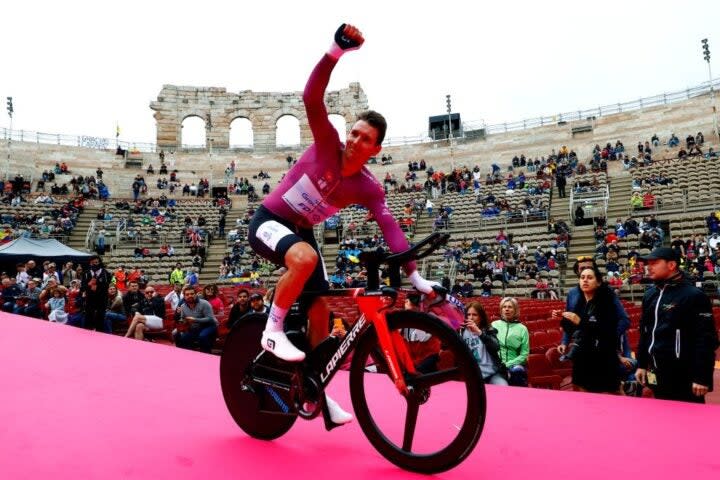
The “maglia ciclamino”, or the mauve jersey, denotes the leader of the points classification at the Giro d'Italia. Points are awarded for the first riders across the finish line as well as at intermediate sprints. The points are scaled depending on the difficulty rating of the stage with more points available on flat days compared to mountainous ones. When the category was re-introduced in 1966 -- after a one-off test in 1958 -- the winner took home a red jersey but that soon changed to mauve in 1069.
Q -- Quintet
Just three riders have a quintet of wins at the Giro d'Italia with Alfredo Binda the first to reach five overall wins. Binda took his first in 1925 by beating two-time winner Constante Girardengo to the title. He had completed his five by 1933, with Fausto Coppi taking the first of his quintet in 1940. Eddy Merckx is the only non-Italian to take five wins, completing his run quicker than any other rider from 1968 and 1974.
R -- Rome
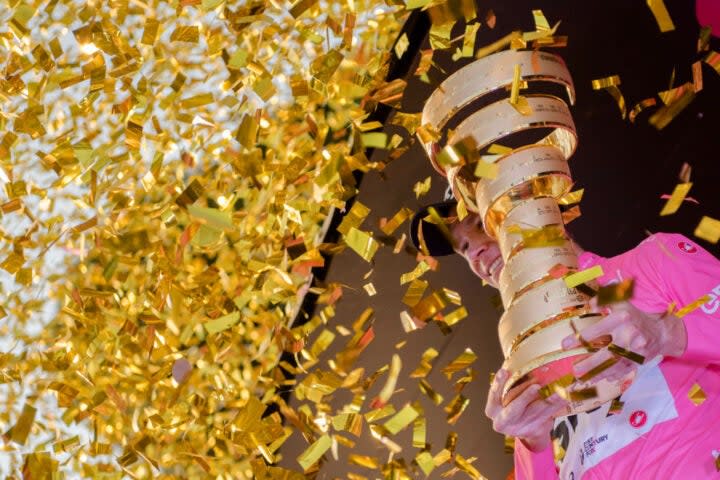
Unlike the other two grand tours during the season, the Giro d'Italia's finale is not specifically linked with its country's capital. Indeed, this year will be just the fifth time that the Giro has concluded in Rome throughout the race's history. The other four editions that reached their denouement in Rome were 1911, 1950, 2009, and 2018. That's not to say that the race has stayed away from Rome and it has hosted a stage finish 49 times since 1909.
S -- Strada
Alfonsina Strade is the only woman to ever ride the men's Giro d'Italia. While there has been a Giro d'Italia for women since 1988, it wasn't early enough for Strade. She took part in the 1924 edition when the organizers mistook her for a man. Organizers had offered 90 riders a place in the race after a disagreement between the Gazzetta dello Sport and the leading riders of the time. Signing up under the name Alfonsin Strada, she was rumbled before the race started but it was too late by then.
T -- Trofeo Senza Fine
The Giro d'Italia has one of the most iconic trophies in cycling. Dubbed the “Trofeo Senza Fine”, or “the endless trophy” in English, the spiraling design was first awarded in 1999. It was the result of a competition by the Italian Institute of Copper -- the material the trophy is made from before it is plated in gold -- that was won by Fabrizio Galli. It weighs almost 10 kilos and is over half a meter tall.
U -- Under the radar
All eyes are on the favorites Primoz Roglic and Remco Evenepoel for the GC win, but there are some riders flying under the radar that will be looking to upset the form book. First in line behind Roglic and Evenepoel is Geraint Thomas, who has the TT to at least keep within touching distance of the duo, while his teammate Thymen Arensman will be interesting to watch. Others looking for glory are Joao Almeida, Jack Haig, Alexander Vlasov, and U.S. star Brandon McNulty.
V -- Vincenzo Nibali
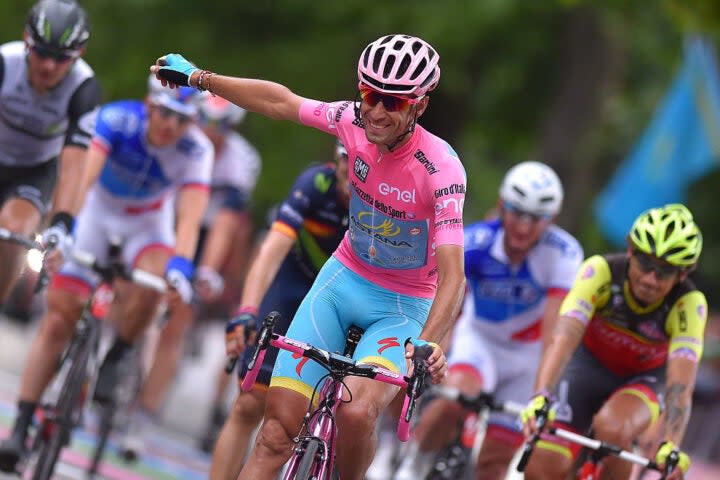
While Italy has dominated the list of winners since the Giro began in 1909, it hasn't won its national grand tour in some time. While the wait hasn't been as long as France and the Tour de France, Vincenzo Nibali was the last Italian to win the Giro d'Italia when he took his title in 2016. Italy has got two riders on the final podium since then with Nibali being two of them and Damiano Caruso doing it in 2021.
W -- Wine
With Italy's rich history in the wine-making industry, it's no surprise that the Giro d'Italia often features a nominated wine stage. This year, the race will visit several wine regions along its route, including Switzerland's big-producing region in Sierre on stage 14. The Abruzzo region where the race starts is the home of Fantini Wines, which sponsors the Israel-Premier Tech and Intermarche-Circus-Wanty teams.
X -- X-Ray
X-Ray machines have become a regular part of life at races as the UCI continues its mission to prevent mechanical doping. A motor has only once been found at the cyclocross world championships with Femke Van den Driessche being punished for it, but it's never been discovered in road racing.
Y -- Young rider
The white jersey is the fourth of the individual classifications, with a team prize also given at the end of the race. Alfredo Vandi was the first rider to win the category in 1976 when it was introduced, along with the white jersey. The organizers chose not to award the prize between 1995 and 2006, before bringing it back for the 2007 season. The jersey goes to the best rider under the age of 25 with some winning both it and the overall title in the same season.
Z -- Zzzz
While the Giro d'Italia provides plenty of action to get excited about, it has its more relaxed moments, too. With stages now shown from start to finish, it's the perfect time to chill out in front of your favorite sport. If you're not too interested in the scenery then you can get some Zs in between the action to the dulcet tones of the commentators and the whir of the helicopter overhead. Make sure to set yourself an alarm so you don't miss too much.
For exclusive access to all of our fitness, gear, adventure, and travel stories, plus discounts on trips, events, and gear, sign up for Outside+ today.

